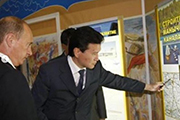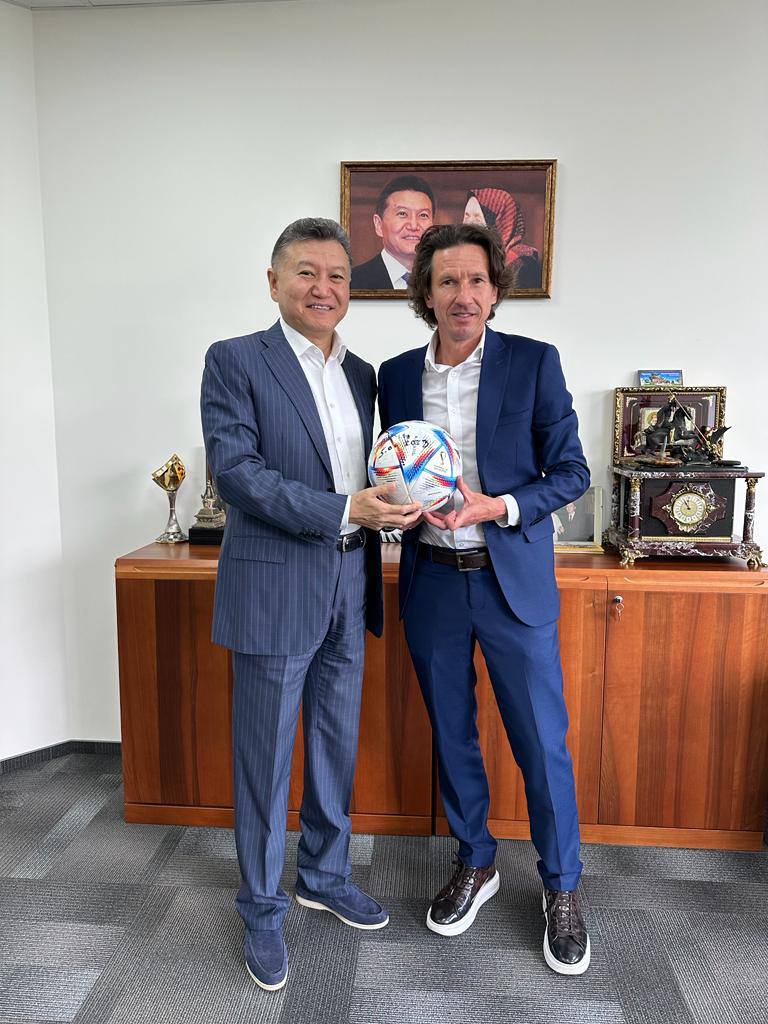This problem can be solved by the completion of the construction of the Manychsky shipping channel, better known as the Eurasia Channel.
The idea of a transit route connecting Kazakhstan and other Caspian states with the Azov-Black Sea basin through the 800-kilometer canal was first put forward by Kirsan Ilyumzhinov in 2008. Then, at the international investment forum in Sochi in 2009, Ilyumzhinov presented a concrete plan for the completion of the construction of the Manychsky shipping canal that had begun in the 30s of the last century but was stopped during the war. According to the idea of Kirsan Ilyumzhinov, the Manych channel should become the main logistical element of the international Eurasia channel.
The project of the Kalmyk leader was immediately noted and supported by Vladimir Putin, Nursultan Nazarbayev, and Chinese partners who were interested in the possibility of transit of goods from the PRC to the EU.
Actually, the Eurasia channel can become a core element of a pan-Eurasian, and in the future, an intercontinental modern transport system, better known as the “New Silk Road”, actively lobbied by the PRC today. The construction in the very near future of the Eurasia Channel can bring many economic and geopolitical benefits for the Russian Federation, as well as neighbouring countries from among the republics of the former USSR.
Experts note that the construction of the Eurasia shipping canal is not just a major infrastructure project, but also a mega-project, as it can dramatically improve the socio-economic situation of the entire region and become one of the important components of Eurasian integration, having solved the common strategic problem of all Central Asian countries that do not have access to the global ocean. Experts also believe that participation in the construction of the channel will contribute to the security of the region as a whole, and Russia in particular.
The new shipping channel will create conditions for the socio-economic and industrial development of the adjacent areas of Kalmykia, Stavropol and Krasnodar Territories, Dagestan, Chechnya, and the Rostov Region. Moreover, it would mean not an abstract but a very definite benefit for people living in those regions of the Russian Federation, where the Eurasia channel will pass.
In particular, Kirsan Ilyumzhinov always argued that the social and economic importance of the Eurasia channel for Kalmykia is just impossible to overestimate. Almost 450 kilometres of the channel will pass through the territory of Kalmykia creating new jobs in the construction and subsequent maintenance of the entire complex of hydraulic structures. This also means the further development of transport infrastructure and energy facilities. Finally, it is an opportunity to provide water to the arid regions of the republic.
Eurasia Channel is perhaps the first infrastructure project in the Southern Federal District, when the opinion of environmentalists is taken into account. A special study was conducted by the Southern Scientific Centre of the Russian Academy of Sciences, which resulted in conclusion that fresh water from the Eurasia Channel would fall into areas characterized by a shortage of drinking water, which undoubtedly will have a huge positive environmental and social impact.
One of the most important results of the implementation of the Eurasia Channel project will be the reduction of unemployment in the Southern Russia, where employment and labour migration problems are quite acute. The construction of the channel will lead to a significant increase of jobs in construction, industrial enterprises and the service sector. Thus, the construction of the channel will directly affect the reduction of unemployment as well as lead to normalization of migration processes, and most importantly, will contribute to the growth of income and welfare of people. The implementation of the Eurasia Channel mega-project will give a powerful impetus to the socio-economic development of the entire Caspian region, including engineering, metalworking, the chemical industry, and so on. In addition, the construction of such an impressive structure will inevitably require the creation of related infrastructure around it.
Speaking about the economic feasibility of the Eurasia Channel mega-project, Kirsan Ilyumzhinov noted that “the exceptional role of the state is to allocate and support those infrastructure projects that will get the most powerful positive effect for the development of the country, repeatedly surpassing all the costs of their implementation."
Pavel Mednikov
 The idea of building a shipping channel between the Caspian Sea and the Azov-Black Sea basin is very old and even ancient. Ancient authors wrote about the possibility of building such a waterway at the turn of the Christian era. They returned to this idea back in the days of Tsarist Russia and the Soviet Union.
The idea of building a shipping channel between the Caspian Sea and the Azov-Black Sea basin is very old and even ancient. Ancient authors wrote about the possibility of building such a waterway at the turn of the Christian era. They returned to this idea back in the days of Tsarist Russia and the Soviet Union.






























